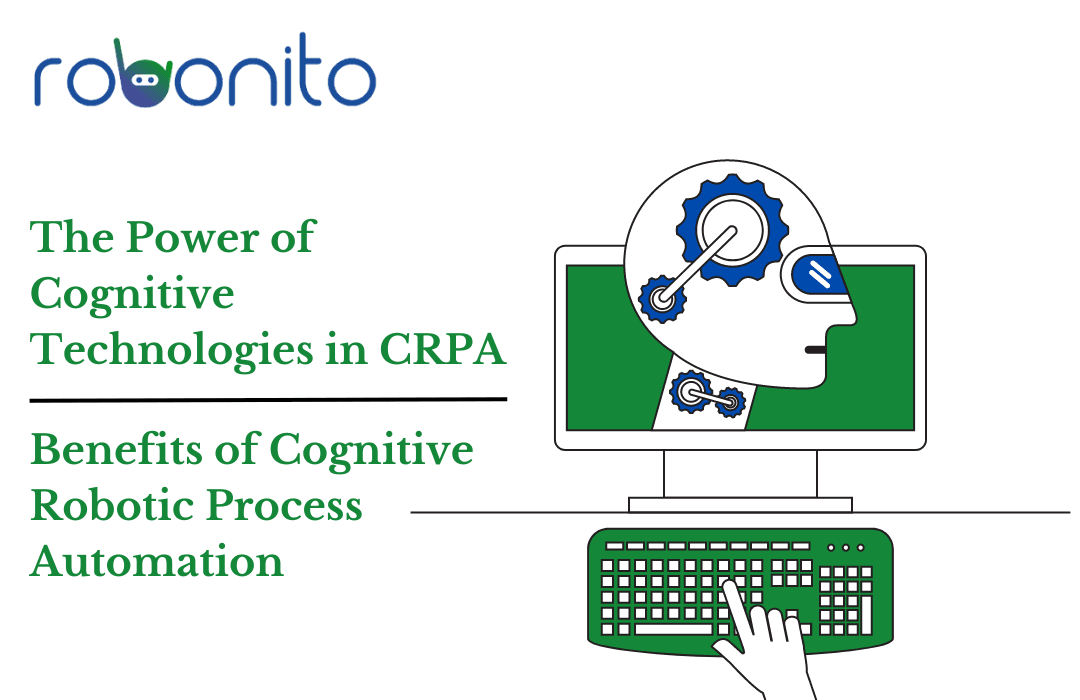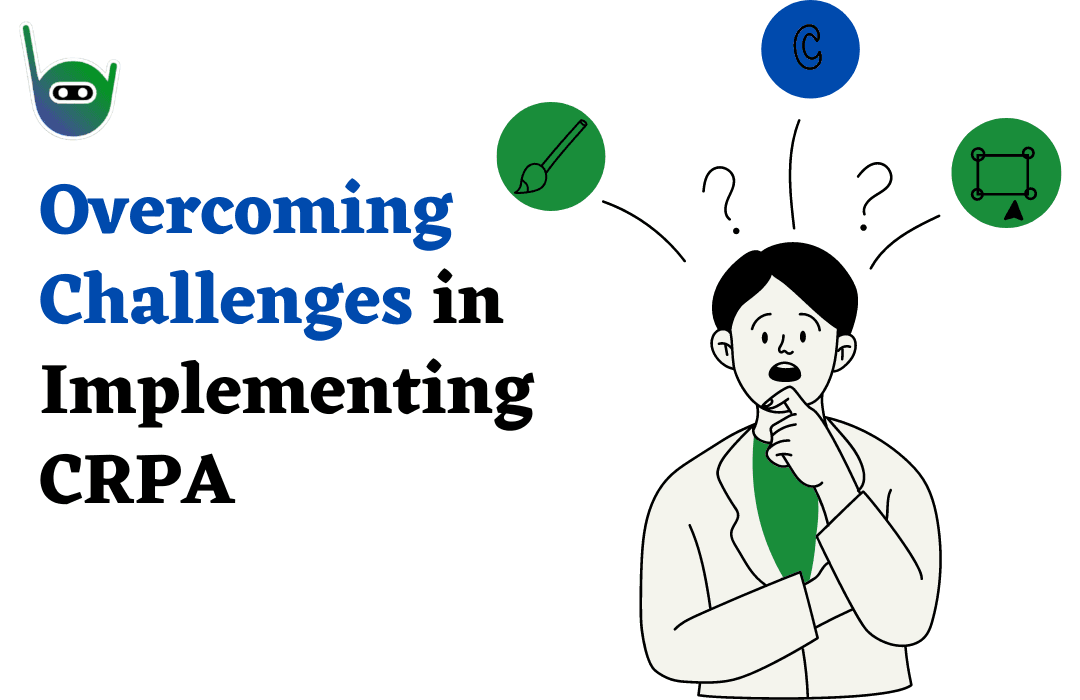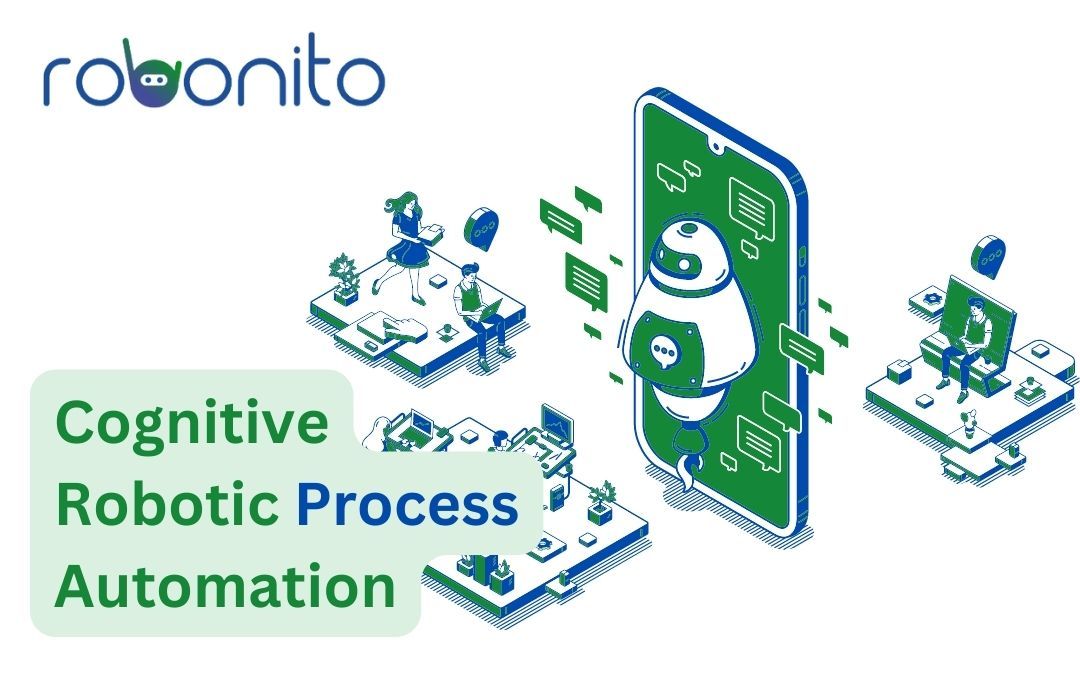Cognitive Robotic Process Automation (CRPA). This revolutionary approach combines RPA with cognitive technologies, enabling machines to perform complex cognitive tasks and decision-making processes. In the digital age, automation has become a driving force in enhancing productivity and streamlining business operations. Robotic Process Automation (RPA) has played a pivotal role in automating repetitive tasks and reducing manual effort. However, with the advancements in artificial intelligence and machine learning, a new paradigm has emerged: In this article, we will explore the concept of cognitive robotic process automation, its benefits, and its impact on various industries.
Understanding Robotic Process Automation (RPA)

1. Enhanced Decision-Making: Cognitive RPA leverages AI technologies, such as natural language processing, machine learning, and computer vision, to automate complex decision-making processes. By analyzing vast amounts of data and learning from patterns and historical trends, cognitive RPA systems can make intelligent recommendations and decisions. This enables organizations to improve the accuracy and speed of decision-making, leading to better outcomes and increased operational efficiency.
2. Improved Data Processing: Cognitive RPA systems have the ability to extract, interpret, and process unstructured data from various sources, including documents, emails, and images. By using AI algorithms, these systems can understand the context, extract relevant information, and perform tasks such as data entry, validation, and classification. This improves data accuracy, reduces manual effort, and eliminates the risk of errors associated with manual data processing.
3. Advanced Task Automation: While traditional RPA focuses on automating repetitive tasks, cognitive RPA takes automation to a new level by incorporating cognitive capabilities. These systems can handle complex tasks that require understanding and decision-making based on contextual information. For example, cognitive RPA can analyze customer inquiries, understand their intent, and provide appropriate responses or escalate to human agents when necessary. This automation of cognitive tasks frees up human resources, increases efficiency, and improves customer service.
4. Process Optimization: Cognitive RPA can analyze end-to-end business processes, identify inefficiencies, and recommend improvements. By combining automation with cognitive capabilities, organizations can streamline workflows, eliminate bottlenecks, and optimize resource allocation. These systems can identify patterns, deviations, and anomalies in processes, enabling organizations to make data-driven decisions to improve efficiency and achieve higher levels of productivity.
5. Enhanced Customer Experience Cognitive RPA can significantly enhance the customer experience by automating and personalizing interactions. By leveraging natural language processing and machine learning, these systems can understand and respond to customer inquiries, provide tailored recommendations, and offer personalized support. This results in faster response times, improved customer satisfaction, and a more personalized customer journey.
6. Regulatory Compliance: In industries with strict regulatory requirements, Cognitive RPA can help organizations ensure compliance and reduce the risk of non-compliance. These systems can automatically analyze and interpret regulations, identify compliance gaps, and suggest appropriate actions. By automating compliance processes, organizations can minimize errors, ensure adherence to regulations, and reduce the associated costs and risks.
7. Continuous Learning and Improvement: Cognitive RPA systems can learn and improve over time through machine learning algorithms. By analyzing patterns, user feedback, and historical data, these systems can continuously enhance their capabilities and performance. This enables organizations to benefit from ongoing process optimization, increased accuracy, and improved decision-making as the system evolves and learns from real-world scenarios.
8. Scalability and Flexibility: Cognitive RPA provides organizations with the scalability and flexibility to handle varying workloads and changing business requirements. These systems can adapt to evolving processes, integrate with new technologies, and accommodate increased volumes of work. The scalability and flexibility of Cognitive RPA allow organizations to optimize their operations and easily scale their automation efforts as needed.
9. Employee Empowerment: Cognitive RPA systems empower employees by automating mundane and repetitive tasks, freeing up their time for more strategic and value-added activities. By offloading routine tasks to the system, employees can focus on critical thinking, innovation, and creative problem-solving. This leads to increased job satisfaction, improved employee morale, and a more engaged workforce.
10. Competitive Advantage: Implementing Cognitive RPA provides organizations with a significant competitive advantage in the market. By automating complex cognitive tasks and leveraging AI capabilities, businesses can deliver faster and more accurate services, make better-informed decisions, and differentiate themselves from competitors. Cognitive RPA enables organizations to stay ahead of the curve and drive innovation in their respective industries.
Robotic Process Automation (RPA) refers to the use of software robots or bots to automate repetitive and rule-based tasks. These bots mimic human actions, interact with applications, and perform tasks with speed and accuracy. RPA has been widely adopted across industries to streamline workflows, reduce errors, and enhance operational efficiency.

The Benefits of Cognitive Robotic Process Automation:
The Power of Cognitive Technologies in CRPA
The integration of cognitive technologies empowers Cognitive Robotic Process Automation systems to handle unstructured data sources such as emails, documents, images, and videos. By utilizing natural language processing, CRPA can interpret and extract relevant information from textual data. Machine learning algorithms enable CRPA systems to continuously learn from data patterns and make intelligent decisions.
Computer vision capabilities enable CRPA bots to analyze and interpret visual data, enabling tasks such as image recognition, object detection, and character recognition. Data analytics in CRPA helps in deriving valuable insights from vast amounts of data, enabling organizations to make data-driven decisions and predictions.
Benefits of Cognitive Robotic Process Automation
CRPA offers several benefits over traditional RPA:
-
Enhanced Decision-Making: CRPA systems can process and analyze complex data, allowing them to make intelligent decisions without human intervention.
-
Improved Accuracy: By leveraging cognitive technologies, CRPA reduces the chances of errors and improves accuracy in data extraction and processing.
-
Increased Productivity: CRPA automates both cognitive and repetitive tasks, freeing up human resources to focus on higher-value activities, ultimately increasing overall productivity.
-
Scalability and Flexibility: CRPA systems can handle a wide range of tasks and scale as per organizational requirements, providing flexibility in adapting to changing business needs.
-
Cost Savings: By automating tasks, CRPA reduces operational costs associated with manual labor, while also minimizing the risk of errors and rework.
Applications of CRPA Across Industries
Healthcare
Cognitive Robotic Process Automation has transformative potential in healthcare. It can assist in patient record management, claims processing, medical coding, and drug discovery. Cognitive bots can extract relevant information from medical records, identify patterns, and support clinical decision-making.
Finance
In the finance sector, CRPA can automate tasks such as invoice processing, fraud detection, compliance, and risk assessment. Cognitive bots can analyze financial data, identify anomalies, and provide real-time insights for decision-makers.
Manufacturing
CRPA can streamline manufacturing processes by automating supply chain management, inventory management, and quality control. Cognitive bots can monitor production lines, detect defects, and optimize resource allocation.
Customer Service
Cognitive Robotic Process Automation can revolutionize customer service by automating customer queries, sentiment analysis, and personalized recommendations. Cognitive bots can provide instant responses, analyze customer feedback, and deliver tailored solutions.
Overcoming Challenges in Implementing CRPA

While Cognitive Robotic Process Automation offers significant advantages, there are challenges that organizations must address during implementation. These include:
-
Data Integration: Ensuring seamless integration of data from various sources and formats.
-
Security and Privacy: Safeguarding sensitive data and maintaining compliance with regulations.
-
Change Management: Preparing employees for the adoption of CRPA and reskilling them for higher-value tasks.
-
Governance and Control: Establishing policies and controls to govern the CRPA implementation and monitor its performance.
Future Trends and Outlook for CRPA
The future of CRPA looks promising, with advancements in artificial intelligence and cognitive technologies. We can expect:
-
Increased Adoption: As organizations realize the transformative potential of CRPA, its adoption will continue to rise across industries.
-
Advanced Cognitive Capabilities: CRPA systems will become more sophisticated in understanding and processing unstructured data, enabling them to perform complex cognitive tasks.
-
Collaboration with Humans: CRPA will augment human capabilities, enabling a symbiotic relationship between humans and machines, leading to increased productivity and efficiency.
Conclusion
Cognitive Robotic Process Automation (CRPA) represents a significant leap forward in automating complex cognitive tasks. By combining RPA with cognitive technologies, organizations can unlock new levels of efficiency, accuracy, and productivity. CRPA has applications across various industries, empowering businesses to streamline processes, improve decision-making, and deliver better customer experiences.
Revolutionize your software testing with Robonito, the ultimate no-code RPA automation testing tool. Say goodbye to endless testing hours – Robonito slashes testing time by a staggering 98%! Ready to experience the future of software testing? BOOK A FREE DEMO NOW and transform your testing process today!
Frequently Asked Questions
Q1: How is CRPA different from traditional RPA?
CRPA incorporates cognitive technologies such as natural language processing, machine learning, and computer vision, enabling machines to perform complex cognitive tasks. Traditional RPA focuses on automating rule-based and repetitive tasks.
Q2: What are the benefits of implementing CRPA?
Implementing CRPA offers benefits such as enhanced decision-making, improved accuracy, increased productivity, scalability, flexibility, and cost savings.
Q3: Which industries can benefit from CRPA?
CRPA can benefit industries such as healthcare, finance, manufacturing, and customer service, among others.
Q4: What are the challenges in implementing CRPA?
Challenges in implementing CRPA include data integration, security and privacy, change management, and governance and control.
Q5: What does the future hold for CRPA?
The future of CRPA looks promising, with increased adoption, advanced cognitive capabilities, and collaboration between humans and machines.
